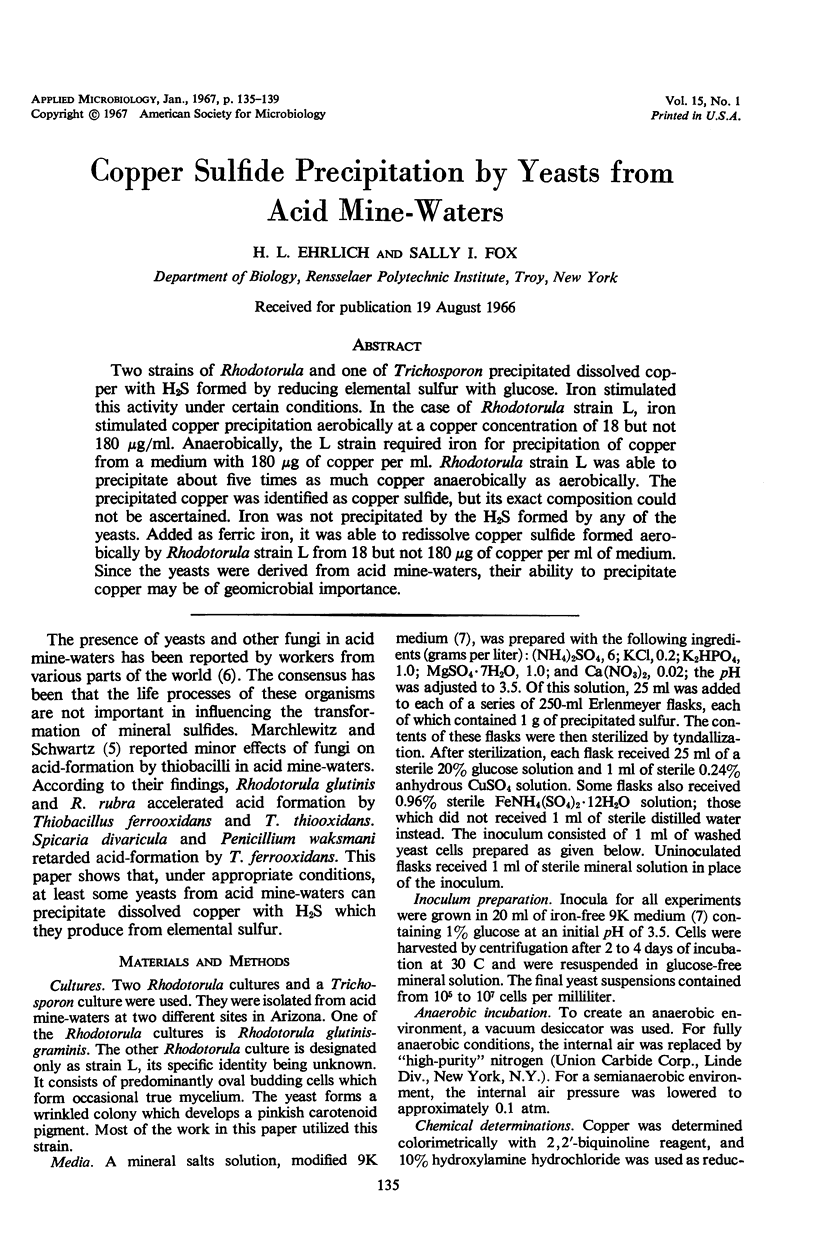Abstract
Two strains of Rhodotorula and one of Trichosporon precipitated dissolved copper with H2S formed by reducing elemental sulfur with glucose. Iron stimulated this activity under certain conditions. In the case of Rhodotorula strain L, iron stimulated copper precipitation aerobically at a copper concentration of 18 but not 180 μg/ml. Anaerobically, the L strain required iron for precipitation of copper from a medium with 180 μg of copper per ml. Rhodotorula strain L was able to precipitate about five times as much copper anaerobically as aerobically. The precipitated copper was identified as copper sulfide, but its exact composition could not be ascertained. Iron was not precipitated by the H2S formed by any of the yeasts. Added as ferric iron, it was able to redissolve copper sulfide formed aerobically by Rhodotorula strain L from 18 but not 180 μg of copper per ml of medium. Since the yeasts were derived from acid mine-waters, their ability to precipitate copper may be of geomicrobial importance.
Full text
PDF




Selected References
These references are in PubMed. This may not be the complete list of references from this article.
- SILVERMAN M. P., LUNDGREN D. G. Studies on the chemoautotrophic iron bacterium Ferrobacillus ferrooxidans. I. An improved medium and a harvesting procedure for securing high cell yields. J Bacteriol. 1959 May;77(5):642–647. doi: 10.1128/jb.77.5.642-647.1959. [DOI] [PMC free article] [PubMed] [Google Scholar]


